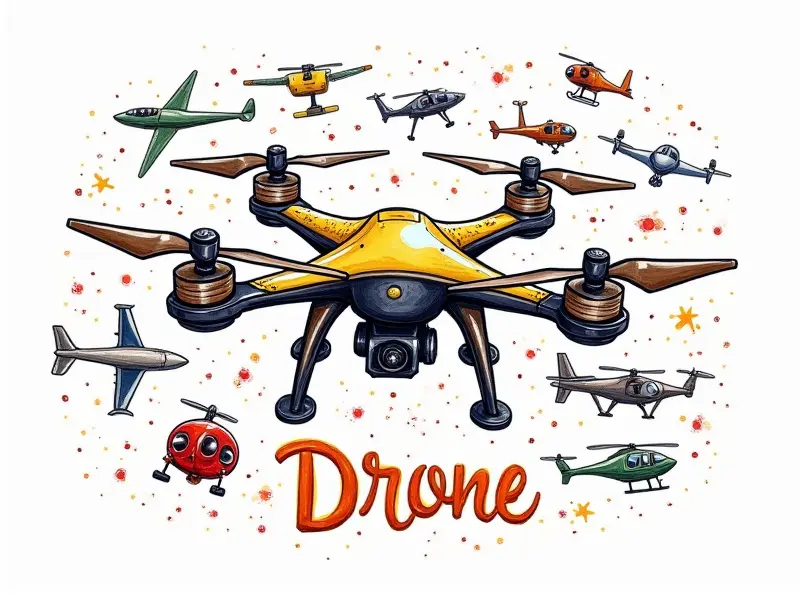Are FPV drones hard to control?

Mastering FPV Drones: Is It Hard?
Flying first-person view (FPV) drones has become increasingly popular among hobbyists and enthusiasts alike, but newcomers often wonder if mastering these high-speed aerial vehicles is a daunting task. The allure of real-time video transmission and the thrill of flying at breakneck speeds can be enticing, yet many beginners find themselves struggling with the basics.
Challenges of Controlling FPV Drones
The primary challenge in controlling FPV drones lies in their unique flight characteristics. Unlike traditional quadcopters that are designed for stability and ease of use, FPV drones prioritize speed and agility. This means they can be incredibly responsive to control inputs but also prone to sudden movements if not handled carefully.
Why Are FPV Drones So Tricky?
The complexity of flying FPV drones stems from several factors:
- Limited Visibility: Pilots rely solely on a live video feed, which can be disorienting and make it difficult to judge distance and speed accurately.
- High Speeds: These drones are capable of reaching impressive velocities, making them challenging to control precisely without causing crashes or losing signal.
- Advanced Controls: FPV drones often come with more sophisticated flight modes and customization options that require a steep learning curve.
Tips for Easy FPV Drone Control
To make the transition to FPV flying smoother, here are some practical tips:
- Start Slowly: Begin with lower speeds and simpler maneuvers before progressing to more advanced techniques.
- Practice Regularly: Consistent practice is key. Spend time mastering basic flight patterns in a safe environment.
- Invest in Quality Gear: High-quality goggles, cameras, and transmitters can significantly enhance your flying experience.
FPV Drone Controls: A Beginner's Guide
Familiarizing yourself with the controls is crucial. Here’s a quick guide to help you get started:
- Throttle: Adjusts the drone’s speed and altitude.
- Ailerons/Roll: Controls side-to-side movement, allowing for agile turns.
- Elevators/Pitch: Manages forward and backward motion.
- Rudder/Yaw: Rotates the drone on its vertical axis.
Can Anyone Fly an FPV Drone Easily?
While FPV drones can be challenging, anyone willing to put in the time and effort can learn to fly them effectively. Patience and persistence are key, as is seeking guidance from experienced pilots who can offer valuable insights and tips.
The Difficulty of Flying FPV Drones
Flying FPV drones certainly presents its challenges, but these obstacles are not insurmountable. The difficulty primarily lies in adapting to the real-time video feed and mastering the nuances of high-speed control. However, with practice and dedication, you can overcome these hurdles.
Overcoming the Learning Curve with FPV
To help navigate this learning curve:
- Join Local Clubs: Engage with local drone communities to learn from experienced pilots.
- Watch Tutorials: Utilize online resources like YouTube tutorials and forums for guidance.
- Start Indoors: Practice in a controlled indoor environment before venturing outdoors.
Is Controlling FPV Drones Really Tough?
The perception that controlling FPV drones is tough stems from the steep learning curve and the inherent complexity of these machines. However, with patience, practice, and the right approach, anyone can become proficient in flying FPV drones.
Beginner's Guide to Flying FPV Drones
This guide aims to demystify the process for beginners:
- Select a Suitable Drone: Choose an entry-level model designed for novices.
- Familiarize with Gear: Understand how your goggles, transmitter, and other accessories work.
- Practice Basic Maneuvers: Focus on mastering takeoffs, landings, and simple flight patterns initially.
Simplifying FPV Drone Operation Techniques
To simplify the operation of FPV drones, consider these techniques:
- Use Training Modes: Many modern FPV drones offer training modes that limit speed and maneuverability to help beginners.
- Focus on Feedback: Pay attention to how your drone reacts to different control inputs to refine your technique.
- Stay Calm Under Pressure: Maintain a calm demeanor during flights, especially when faced with challenges or unexpected situations.
Conclusion
Mastery of FPV drones is achievable through dedication and consistent practice. While the initial learning curve can be steep, the rewards in terms of enjoyment and skill development are immense. By following these tips and embracing a patient approach, you'll find yourself flying FPV drones with confidence and ease.

